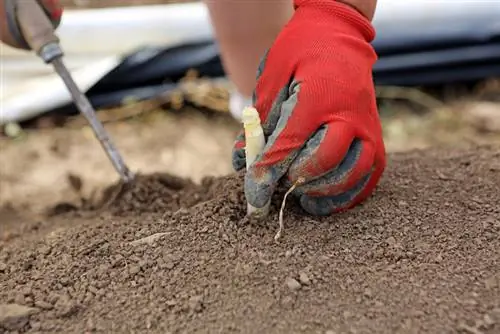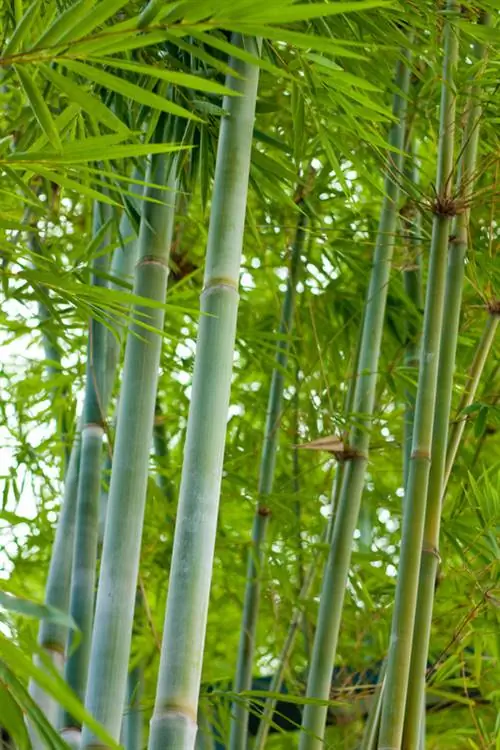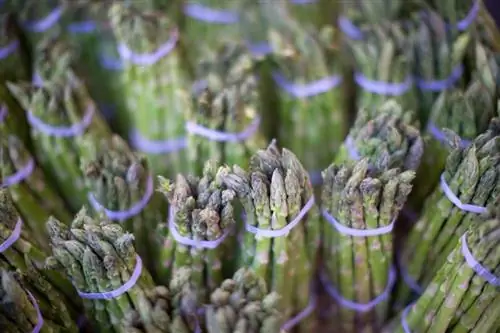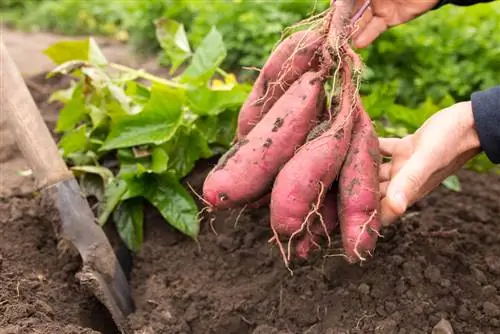- Author admin [email protected].
- Public 2023-12-16 16:46.
- Last modified 2025-01-23 11:20.
For all fans of this tasty vegetable, there is a particularly important date this month, more precisely, on June 24th, the annual St. John's Day. The time has now come to cut the very last asparagus of the year in order to give the plants their well-deserved rest. For particularly early varieties, harvesting ends in the middle of the month, because the asparagus plants - if their yield is to be high again next year - need this time to regenerate. Anyone who has just harvested their own asparagus in the first year should start their personal gourmet season as early as the 10th.end June. That sounds harsh, but it is necessary so that the young plants can develop and strengthen their natural growth unhindered. You may plow longer if it is an old asparagus field that has existed for ten years and is to be plowed up anyway.

When does the asparagus harvest end?
The asparagus harvest traditionally ends on June 24th, St. John's Day, to allow the plants a regeneration phase. Early varieties or young plants should even be harvested on June 10th or in the middle of the month to ensure optimal yield in the following year.
Assimilation and photosynthesis are a must
Due to the fact that the ever-growing sprouts had just been cut off from the plant for weeks, the asparagus was not only interrupted in its growth, but also enormously weakened. Nature usually regulates this loss of strength itself, so that in the following weeks the following happens to the “living being plant”: Since the sprouts are finally allowed to go into the light for several days, the formation of leaves begins, which soon turn into the so-called false leaves recede and finally take the form of narrow needles. Since our asparagus plant, which comes from southern Europe and Western Asia, has already adapted to the very dry locations, large amounts of moisture and the nutrients absorbed are passed on to the roots via photosynthesis and stored there. The particularly strong plants that have been standing for several years can go up to six meters deep underground.
Well cared for, asparagus brings abundant yields
We have summarized for you here why your asparagus plants need to be fertilized regularly. However, synthetic fertilizer should be avoided and real organic connoisseurs only use stable manure (preferably from horses) or compost for their asparagus plants. In conventional cultivation, however, pesticides with copper solutions are sometimes used, which, when brought to the asparagus vines via underground pipe systems, are intended to combat fungal infestation. The fact that there is another way is shown by the certified Demeter asparagus, which uses field horsetails processed into herbal tea for fertilization.
What else your asparagus wants
If you want to enjoy naturally he althy asparagus from your own organic cultivation for at least ten years, just heed our following tips:
- Loose up the bed soil from time to time and keep it moist (avoid waterlogging if possible).
- Remove large weed growth regularly and loosen the soil from time to time.
- Check for possible insects or fungal infestation at least once a month.
- The dead asparagus should not be cut off and burned (!) until November. By then, all the nutrients absorbed have been stored in the roots for the coming growing season.






